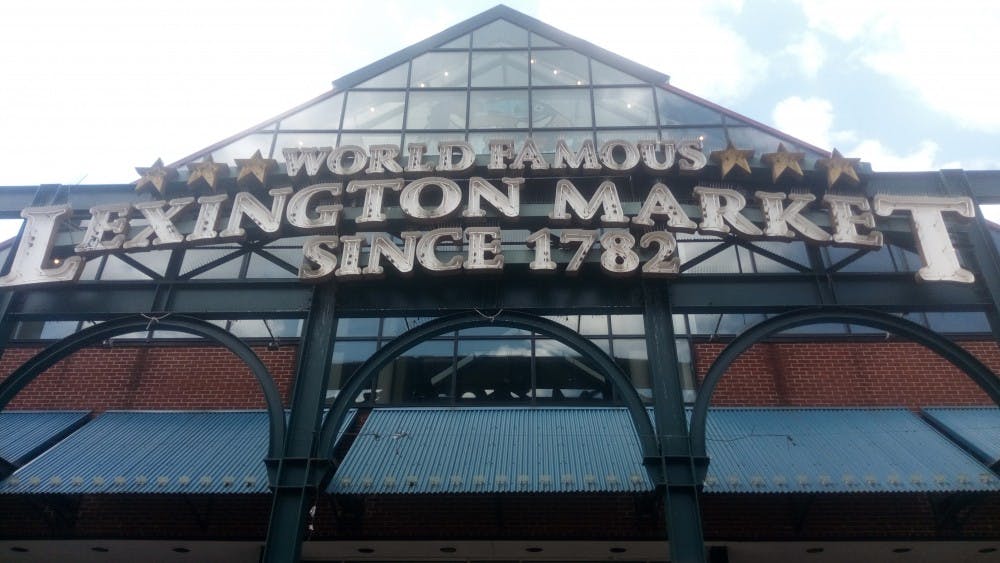MOMENTS IN HISTORY
The General Assembly of Maryland established Baltimore in 1729. It was named after Cecil Calvert, 2nd Baron Baltimore, in the Irish House of Lords, who was the founding proprietor of the Province of Maryland. Closer to large Midwestern cities than any other harbors on the East Coast, Baltimore soon became a trade hub and was the second-busiest port of entry for immigration. Shipping mainly happened out of Fell’s Point, Locust Point and Canton rather than the Inner Harbor.
Charm City is also home to the B&O Railroad, the country’s oldest public railroad. Built in 1830, B&O was one of the first companies to use an American-built steam engine.
The city also played an important role during the Revolutionary War. In response to high taxes from the British, many merchants within the city signed agreements to not trade with Great Britain. This was particularly impactful in light of Baltimore’s role as an import route to the Midwest.
Baltimore’s most famous historical moment occurred during the battle of 1812. Maryland-born lawyer and amateur poet Francis Scott Key witnessed the British bombardment of Fort McHenry during the Battle of Baltimore. Later, inspired by the sight of the American flag still waving above the fort at dawn, Key wrote “The Star-Spangled Banner,” the poem that would later become our national anthem.

EDA INCEKARA/PHOTOGRAPHY EDITOR
The Washington Monument in Mount Vernon stands at almost 179 feet.
FAMOUS LANDMARKS
Lexington Market is located in West Baltimore. It is the oldest market in the U.S. and almost as old as the country itself. Founded in 1782, by the mid-19th century it was unquestionably the largest, most famous market in America. While it started as an outdoor collection of stands and carts, the market is now located within two large buildings and is considered a Baltimore icon.
The Washington Monument is the first monument to honor the first president, George Washington. Construction on the monument began in 1815 by the same man who would later build the National Mall and the Washington Monument in D.C. The ground floor contains a gallery featuring the history of the Mount Vernon area and the accomplishments of George Washington. The tower has a total of 227 marble steps which lead to a great view of the city.
Phoenix Shot Tower is one of Baltimore’s first National Historic Landmarks. When it was constructed in 1828 near Inner Harbor, it stood at 234 feet and was the tallest building in the U.S. Molten lead was dropped from the top of the tower and poured through a sieve into a vat of cold water in order to create ammunition for rifles and cannons. Even after this method of creating ammunition became obsolete, residents raised $17,000 in order to buy the monument and keep it from being demolished. The city officially took ownership of it in 1925. Later, in the 1960s, the building was used as a bomb shelter.
PEOPLE
Edgar Allan Poe was born in Boston, but later moved and eventually died in Baltimore from causes that remain unknown. Poe was acclaimed for his macabre writing and is perhaps most famous for his poem “The Raven.” Poe is also credited with inventing the detective story contributing to the invention of science fiction.
Born in Baltimore, Thurgood Marshall became the first African-American Supreme Court Justice in 1967. He also founded the National Association for the Advancement of Colored People’s Legal Defense and Educational Fund, which focuses on litigation and advocacy for people of color. In his role at the Defense Fund, Marshall represented Donald Gaines Murray whose application to the University of Maryland School of Law was rejected because of his race. This case ultimately made it to the Supreme Court, which ruled in favor of Murray. This case set the precedent for making segregation illegal in Maryland.
Babe Ruth was born in 1895 in Baltimore and was signed to the Baltimore Orioles directly from a reform school for boys in West Baltimore. Rumor has it that he was sent to this institution, where he acquired valuable life and baseball skills, after breaking windows while playing streetball. The media gave Ruth unprecendented attention for both his record-breaking games on the field and his scandalous womanizing off the field. One of the first five inaugural members to the Baseball Hall of Fame, many people consider Ruth an American icon for his time as a Major League Baseball player. Two of his batting records remain unbroken in 2018.
Irene Morgan was a civil rights activist and Baltimore native. Morgan sued the Commonwealth of Virginia after refusing to give up her seat on a Greyhound bus to a white passenger. Though she was seated in the colored section, the driver pulled over and had her arrested when she refused to give up her seat. The case eventually made it to the Supreme Court, which ruled in her favor, declaring racial segregation in interstate transport to be unconstitutional. This occurred more than a decade before Rosa Parks made her famous stand against racial segregation in Montgomery.
Frederick Douglass was brought to Baltimore at just seven or eight to be the companion of a young white boy. After escaping from slavery, Douglass became a leader in the abolitionist movement. He wrote several books and actively supported suffrage. He held several political appointments and became the first African American to run for Vice President, as part of the Equal Rights Party ticket. Douglass later returned to Baltimore and built row houses for African-American families which still stand in Fell’s Point.





